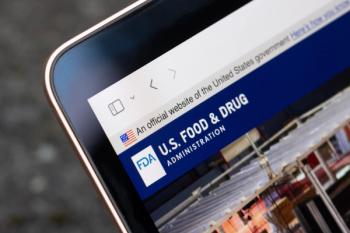
Strategies for Biosimilar Adoption
Bhavesh Shah, RPh, BCOP; Brandon Dyson, PharmD, BCOP, BCPS; Ryan Haumschild, PharmD, MS, MBA; and Tim Peterson, PharmD, BCOP, provide advice and strategies for adopting biosimilars into clinical practice.
Episodes in this series

Bhavesh Shah, RPh, BCOP:This has been an amazing and rich discussion with my panelists. But before we go, I want each panelist to share a piece of advice with our audience in terms of a strategy that they could use to successfully aid the adoption of biosimilars into practice. We’ll start with Brandon.
Brandon Dyson, PharmD, BCOP, BCPS:The best advice I can give is to be the champion, and that is to know as much, to study as much, and to learn as much as you possibly can. For pharmacists especially, we’re uniquely positioned as translators, as I like to call us. We have to be able to convincingly hold a conversation with a physician, followed by a nurse, followed by a patient, followed by that patient’s mother or spouse, and communicate appropriately to all of them all this knowledge that we’ve just talked about tonight to ease everyone’s mind that this is the right thing to do. That’s not easy, and the best way to do it is to be as educated and informed as you can on the process. You need to go in with an open mind and learn as much as you can.
Bhavesh Shah, RPh, BCOP:Ryan, do you want to take the next 1?
Ryan Haumschild, PharmD, MS, MBA:I would say you’ve got to have a game plan. I never want to estimate the amount of people who need to be involved. That’s why we did a survey at the beginning to figure out all the key players. We recognized physician education was something we could work on, but it was actually pretty good; they understood biosimilars. But 1 of the things we recognized is the EMR [electronic medical record] and getting the precertification was a huge barrier. We needed to make it built out where we didn’t have to touch every single plan every time a new biosimilar came to market. And educating your finance team is important. Initially, if you’re a percentage-of-charge hospital or a PPS [prospective payment system]–exempt institution and you start using a biosimilar, you might see a margin go down, and they have to understand that that’s going to be offset with cost, not just gross revenue. It’s important to understand pass-through status and how that plays into the ASP [average sales price]–plus instead of the ASP-negative model. By doing that and approaching it as an individual way, your game plan, Bhavesh, is going to be very different from mine because we have institutional uniqueness to our practice model. We take that in and come up with a game plan and then really focus on every phase of the implementation process, even down to patient education. That’s how you’re truly successful, and you can become a really early adopter for biosimilars. Reducing that financial toxicity and increasing the operational excellence is important.
Bhavesh Shah, RPh, BCOP:Thank you, Ryan. We saved the best for last. Tim?
Tim Peterson, PharmD, BCOP:Pharmacists in the setting of biosimilar adoption and education is 1 of the most important things. In terms of prescriber buy-in, Brandon already talked about pharmacy and prescriber champions being part of the P&T [pharmacy and therapeutics] committee for provider education. But in terms of educating patients, patient buy-in is very important too. We know that we’re still getting our feet under ourselves with regard to understanding how to incorporate biosimilars, so this is a completely foreign topic to patients, especially those patients you guys have talked about. Say they’re on rituximab maintenance. We’re going to give them an entirely different formulation, and this just comes completely out of left field for them. The education component for clinical pharmacists and staff pharmacists to be able to discuss at a patient level the biosimilar approval process is abbreviated. That may frighten them, just that word in and of itself. We need to discuss the approval process and why we’re comfortable with the analytical data behind that process and what makes it clinically safe and effective for them.
Bhavesh Shah, RPh, BCOP:Based on this discussion, I feel like we need a consultant for biosimilars to help adopt biosimilars into practice, right? But in terms of my advice, I agree with everything you guys said. The payer has actually been 1 of the limitations that I’ve heard across the country as being a barrier to access biosimilars. What we did in our market was actually work with our payers early on, basically going to the table and making sure that they knew that we were going to be adopting these biosimilars before they were approved. In our market, what we noticed was that not a single payer actually had a policy that preferred a reference product or 1 biosimilar over the other and they really left it up to the provider. It was unheard of for payers to work with providers like that, but we collectively—various institutions in our ecosystem—went to the payer and made this recommendation that they do not prefer these products over our choice. It really opens the provider to prescribe what they want to prescribe and the institution to adopt whatever agent is more feasible for their contracting perspective, and it makes it a much nicer transition.
Of course there’s a lot of other things that you guys mentioned, great advice in terms of knowing all of those aspects in terms of the electronic medical record, patients’ education, and provider education. For the whole P&T process, I feel like we need a toolkit around that just so people can have a checklist of what you need before you start adopting a biosimilar into practice. One of the other things that I always hear is regarding the resources to do this. You guys all have a full-time job. It’s not like you can just go and change 200 patients to a biosimilar. It takes an army to actually coordinate this effort. That’s where even senior leadership needs to be more involved as you’re making these changes into practice.
I want to thank you again: the panelists and the audience. We really hope you found this Directions in Oncology Pharmacy® Peer Exchange discussion informative and useful.
Transcript edited for clarity.
Newsletter
Stay informed on drug updates, treatment guidelines, and pharmacy practice trends—subscribe to Pharmacy Times for weekly clinical insights.






















































































































































































































